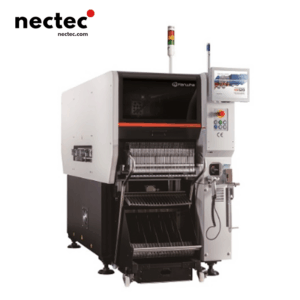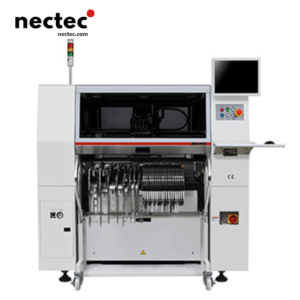The landscape of electronic manufacturing has significantly evolved over the years, with an increasing emphasis on efficiency, precision, and cost-effectiveness. Among the many innovations that have revolutionized this industry, the Surface Mount Technology (SMT) automatic vacuum PCB loader stands out as a transformative tool. This article delves into the intricacies of SMT automatic vacuum PCB loaders, their benefits, and how they contribute to enhanced productivity in manufacturing.
Understanding SMT and PCB Loaders
Surface Mount Technology (SMT) is a method that allows the attachment of electronic components onto the surface of a printed circuit board (PCB). This technique is lauded for its ability to optimize the use of space on PCBs, enabling smaller and more efficient electronic devices.
As the demand for miniaturized electronic products continues to rise, so does the necessity for effective PCB loading solutions. An automatic vacuum PCB loader is designed to streamline the feeding process of PCBs into SMT assembly lines, thereby enhancing the overall manufacturing workflow.
How SMT Automatic Vacuum PCB Loaders Work
SMT automatic vacuum PCB loaders employ advanced technology to meticulously pick and place PCBs onto the conveyor systems of SMT machines. The process begins with the loader’s vacuum system, which securely grips the PCB, allowing for precise placement without damaging sensitive components or circuits.
These loaders are equipped with advanced sensors and imaging systems that analyze the PCB’s dimensions and alignment. This ensures that every PCB is positioned correctly, significantly reducing the chances of errors during the assembly process.
The Benefits of Using SMT Automatic Vacuum PCB Loaders
- Increased Throughput: One of the primary advantages of SMT automatic vacuum PCB loaders is their ability to increase production speed. By automating the loading process, manufacturers can significantly reduce the time taken to load PCBs, leading to higher throughput rates.
- Enhanced Precision: With the integration of advanced sensors and software, these loaders provide pinpoint accuracy when placing PCBs. This precision is vital for maintaining the quality and reliability of the final product.
- Reduced Labor Costs: Automating the loading process means lower labor costs. Fewer personnel are needed to manage the loading of PCBs, allowing manufacturers to allocate their workforce more effectively.
- Minimized Downtime: Automatic loaders can quickly adapt to different PCB sizes and shapes, reducing downtime that is often associated with manual setups. This flexibility ensures that production lines are continuously operational, maximizing output.
Key Features to Look for in an SMT Automatic Vacuum PCB Loader
When selecting an SMT automatic vacuum PCB loader, manufacturers should consider several key features:
- Compatibility: Ensure the loader is compatible with various PCB sizes and types to meet diverse production needs.
- Speed and Performance: Look for loaders with high-speed capabilities to maximize throughput without sacrificing quality.
- Ease of Use: The operator interface should be intuitive, enabling quick training and improved operational efficiency.
- Robustness: A durable design is essential for long-term reliability in a demanding manufacturing environment.
The Future of PCB Loading Technology
As technology continues to advance, the future of PCB loading will likely see further innovations. Integration with AI and machine learning may enable these systems to learn from previous operations, predicting necessary adjustments to enhance performance and reduce waste.
Moreover, improvements in connectivity may allow for seamless integration with other manufacturing processes, creating a fully automated production line that is adaptive to market changes and customer demands.
Case Studies: Success Stories with SMT Automatic Vacuum PCB Loaders
Many companies have already reaped the benefits of integrating automatic vacuum PCB loaders into their operations:
For instance, a leading electronics manufacturer reported a 30% increase in productivity after implementing a state-of-the-art SMT automatic vacuum PCB loader. By reducing manual labor, they could redirect resources to more complex tasks, thereby enhancing overall efficiency.
Another case involved a PCB assembly company specializing in high-volume production. By adopting an automatic loader, they not only reduced their loading times significantly but also minimized defects, leading to increased customer satisfaction and repeat orders.
Tips for Implementing SMT Automatic Vacuum PCB Loaders Successfully
Transitioning to an SMT automatic vacuum PCB loader system requires careful planning and execution. Here are a few tips to ensure a successful implementation:
- Conduct a Needs Assessment: Before investing in a loader, conduct a thorough assessment of your current production processes and identify areas that require improvement.
- Choose the Right Technology: Not all loaders are created equal. Research various models and manufacturers to find a loader that fits your specific production requirements.
- Train Your Staff: Proper training is crucial for maximizing the potential of new technology. Ensure your staff is well-trained not just on the operation, but also on troubleshooting and maintenance.
- Monitor and Adjust: Once implemented, regularly monitor the loader’s performance and be prepared to make adjustments to settings or procedures to optimize efficiency.
The Cost-Benefit Analysis of SMT Automatic Vacuum PCB Loaders
While the initial investment in SMT automatic vacuum PCB loaders may be substantial, a comprehensive cost-benefit analysis often reveals significant long-term savings. Factors such as reduced labor costs, increased throughput, and minimized errors can lead to lower overall production costs.
Furthermore, the ability to scale operations rapidly in response to market demands can yield a quicker return on investment, making these loaders a wise choice for future-oriented companies.
Final Thoughts on SMT Automatic Vacuum PCB Loaders
The adoption of SMT automatic vacuum PCB loaders is not just a trend; it’s a strategic investment in the future of electronic manufacturing. Companies that embrace this technology will find themselves at a competitive advantage, capable of meeting the ever-increasing demands of the modern market. From enhanced efficiency to reduced costs, the benefits of integrating automatic loaders into PCB assembly lines are significant and undeniable.











